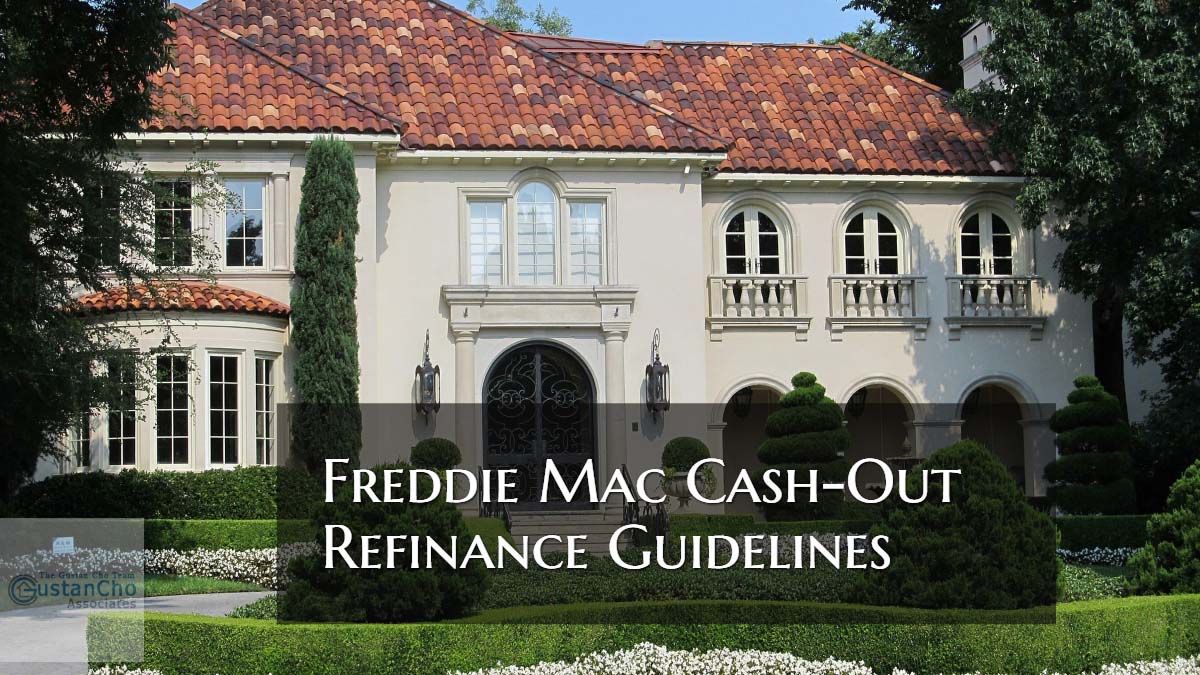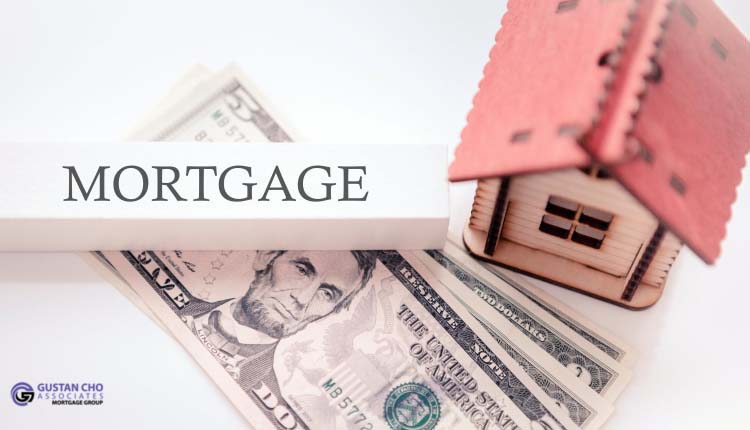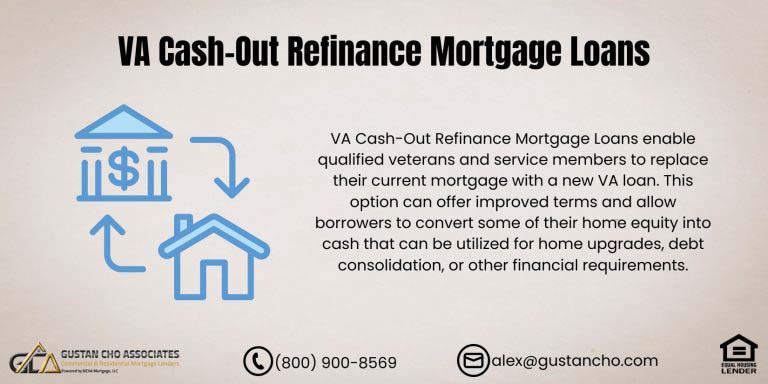This guide covers Fannie Mae and Freddie Mac cash-out refinance guidelines and the limited amount of cash to be taken out on a limited rate and rate refinance on conventional loans. Freddie Mac cash-out refinance guidelines allow a limited amount of cash to be taken out on a limited rate and term refinance on conventional loans. Per Freddie Mac cash-out refinance guidelines, borrowers can get up to 1.0% of the mortgage loan amount and/or $2,000, whichever is less, on a rate and term conventional refinance mortgage loan. Freddie Mac cash-out refinance guidelines on limited rate and term mortgages are different than a full Conventional Cash-Out Refinance. There is no limit on the amount of cash-out that can be taken out up to 80% Loan-To-Value (LTV) on a full cash-out refinance mortgage. With a full Fannie Mae and Freddie Mac Cash-Out Refinance Mortgage, borrowers can take out up to 80% LTV of their property’s appraised value. In this blog, we will discuss Fannie Mae and Freddie Mac Cash-Out Refinance Guidelines on limited rate and term conventional refinance mortgages.
Freddie Mac Cash-Out Refinance on Rate And Term Loans
These new Freddie Mac cash-out refinance guidelines apply to rate and term refinance conventional loans. This is different than the standard full Freddie Mac Cash-Out Refinance up to 80% LTV. It is a limited cash-out available on rate and term conventional loans. Many homeowners are taking advantage of the lower mortgage rates to refinance their current home loans. Others with FHA loans are refinancing to conventional loans to get rid of their hefty 0.55% annual FHA Mortgage Insurance Premiums. Recent changes in tax laws no longer allow homeowners to exempt second mortgages. With Fannie Mae, the maximum amount of limited cash back on rate and term refinances is 2% of the total mortgage loan balance or $2,000, whichever is less.
Refinance & Cash Out! Get the Funds You Need for Home Improvements, Debt Consolidation & More
Apply Online And Get recommendations From Loan Experts
Fannie Mae and Freddie Mac Rate and Term Refinances: The Maximum a Borrower Can Receive Without Triggering a Full Fannie Mae and Freddie Mac Cash-Out Refinance
For Fannie Mae and Freddie Mac rate and term refinances (also known as limited cash-out refinances), the maximum amount of cash a borrower can receive without triggering a full cash-out refinance is:
- Fannie Mae: Up to 2% of the new loan amount or $2,000, whichever is less.
- Freddie Mac: Up to 1% of the new loan amount or $2,000, whichever is less.
These limits apply to limited cash-out refinance mortgages, which are primarily intended for reducing interest rates, changing loan terms, or switching from FHA/VA loans to conventional loans. If a borrower wants to take out more than these limits, they would need to opt for a full cash-out refinance, which allows borrowing up to 80% Loan-to-Value (LTV) on a conventional loan.
Here is a flowchart Fannie Mae and Freddie Mac Cash-Out Refinance:
Here is the potential change in max cash out on the two ways:
Loan Amount Fannie Mae Freddie$60,000 $1,200 $2,000$80,000 $1,600 $2,000$100,000 $2,000 $2,000$200,000 $2,000 $2,000$300,000 $2,000 $3,000$400,000 $2,000 $4,000$453,100 $2,000 $4,000
Net Tangible Benefit With Refinancing
Many homeowners do not realize how much their home values have increased in the past few years. The Federal Housing Finance Agency (FHFA) has increased conventional loan limits for the past three years due to rising home prices. FHFA increased conforming loan limits to $806.500. HUD, the parent of FHA, also increased FHA loan limits for the past three years due to rising home values. FHA loan limits for 2025 are capped at $524,225.
With rising home values, many homeowners with FHA loans can benefit from refinancing to conventional loans and avoid paying Private Mortgage Insurance (PMI). Homeowners who have benefited from their home values can see if they still require private mortgage Insurance. Private Mortgage Insurance on conventional loans is automatically removed when a homeowner hits a 78% Loan-To-Value of the scheduled amortization plan. It is not exempt if the homeowner pays down the balance to meet the 78% LTV sooner than the scheduled term.
FAQs: Fannie Mae’s and Freddie Mac’s Rate and Term Refinances – The Cash-Out Cap Per Borrower
What maximum cash can a borrower receive on a rate and term refinance for Fannie Mae?
- The borrower may receive 2 percent of the new loan amount, not exceeding $2,000, without triggering a cash-out refinance.
What is the maximum cash a borrower can receive on a rate and term refinance for Freddie Mac?
- The borrower may receive 1 percent of the new loan amount not exceeding $2,000 and not trigger a cash-out refinance.
What is the difference between a rate and term refinance and a full Fannie Mae and Freddie Mac cash-out refinance?
Rate and Term Refinance:
- This is done for any combination of lowering the interest rate, changing the terms of the loan, or changing the type of loan (FHA to Conventional).
- A limited cash-out allowance is capped at $2,000 or a small percentage of the loan amount.
- Risk pricing is less severe than that of a cash-out refinance.
Full Cash-Out Refinance:
- This is the method for gaining access to home equity, enabling borrowing against 80% of a home’s value on conventional loans.
- This loan type is priced with a margin of risk, resulting in higher interest rates and underwriting rules.
- Loans with less documentation and reserves may be granted to help secure the loan.
Why do borrowers prefer a rate and term refinance over a cash-out refinance?
Many homeowners prefer a rate and term refinance due to the following reasons:
- The interest rates charged are less than that of a full cash-out refinance.
- Monthly payments can be lowered by increasing the loan term or reducing the rate.
- When a FHA loan is refinanced to a conventional loan, mortgage insurance is no longer needed.
- Less stringent qualification requirements are needed due to lower pricing adjustments than a full cash-out refinance.
- Additional fees and risk-based loan pricing are avoided.
What happens if the borrower exceeds the rate and term refinance limit?
A borrower who exceeds the limit of $2,000 (or percentage limit) in cash will be classified as a full cash-out refinance, meaning:
- The interest rates will be higher, and loan qualification criteria will be more stringent.
- Under a refinance, some additional risk-based pricing adjustments must be made.
- The loan may be affected by having to deny it.
Can a borrower refinance and pay off a second mortgage or home equity line of credit (HELOC)?
Yes, but it is limited:
- Allowed in the case where the second mortgage is a purchase money second lien.
Not Allowed:
- A cashout refinance would be required if the second mortgage or HELOC were taken out as cashout loans for remodels or as debt consolidation.
Do these cashout limits extend to investment properties and second homes?
- Yes, a cashout limit will apply for Fannie Mae or Freddie Mac.
- These cash-out limits are also used for main residences, secondary homes, or investment homes.
How does mortgage insurance (PMI) affect rate and term refinance?
- PMI is usually required if the amount of the new loan is above 80% LTV.
- A borrower will also already have Private Mortgage Insurance, and a new lender may ask the borrower for it.
- The lender only offers it if the borrower’s LTV is below 80%.
- Borrowers from FHA loans will stop paying FHA Mortgage Insurance Premiums (MIP) when switching to conventional loans.
What is the timeframe for processing a rate and term refinance?
Refinancing typically takes around 20 to 45 days. Certain things can influence how long refinancing will take:
- How quickly is the lender able to process it?
- If they are going to need an appraisal done.
- Document and Response Time
- Title and Escrow Processing
Can a borrower roll closing costs into a rate and term refinance?
- Yes, as long as the borrower meets the qualifying criteria under the new loan terms, closing costs, prepaid taxes, and insurance may be added to the new loan amount.
Are there any credit score requirements for a rate and term refinance?
- Lenders typically require a minimum credit score of 620 for a conventional loan.
- Higher credit scores (680+) tend to have an easier time getting more favorable interest rates.
- Approval is contingent upon DTI, LTV, and credit history.
Can self-employed borrowers qualify for a rate and term refinance?
- Yes, but they must provide two years of tax returns (personal and business), as well as any relevant profit and loss statements and bank statements, to verify income consistency.
What are the debt-to-income (DTI) ratio requirements for a rate and term refinance?
- The general limit for most borrowers is a DTI of 45%. Some borrowers with strong compensating factors (high credit scores, significant assets) may qualify with a DTI of up to 50%.
Can a borrower refinance out of an adjustable-rate mortgage (ARM) using a rate and term refinance?
Yes, borrowers have the option of using the rate and term refinance to shift from an ARM to a fixed-rate mortgage, which yields:
- Less fluctuation in monthly payments.
- Safeguard from rising interest rates in the future.
Can a homeowner refinance immediately after purchasing a home?
- Most lenders place a six-month hold on refinancing a new home loan.
- This does not apply to construction loan conversions, where the loan is refinanced as part of a conversion.
What are the advantages of moving from an FHA to a conventional loan?
- Cancel FHA Mortgage Insurance Premiums (MIP) outright.
- Decrease the monthly payment when the borrower qualifies for a reduced payment.
- Save money over the loan duration.
- No loan limitations (e.g., FHA’s strict property condition requirements).
What types of properties are eligible for a rate and term refinance?
Eligible property types include:
- Single-family dwellings.
- Condominiums and townhouses (must meet the conventional loan condo approval criteria).
- 2-4 unit properties (primary residences, secondary homes, investment properties).
- Modular and manufactured homes (subject to meeting lender requirements).
Closing Remarks on Fannie Mae and Freddie Mac Cash-Out Refinance
Knowing the maximum cash-out limits available for a Fannie Mae and Freddie Mac rate and term refinance helps homeowners strategize better when refinancing their mortgages. Whether increasing the interest rate, changing the loan’s term type, or removing the FHA mortgage insurance, borrowers should consider their LTV, DTI, credit score, and financial objectives before selecting the most suitable option for refinance.
Contact a mortgage expert today if you want additional information on refinancing options or to learn more about your eligibility!










